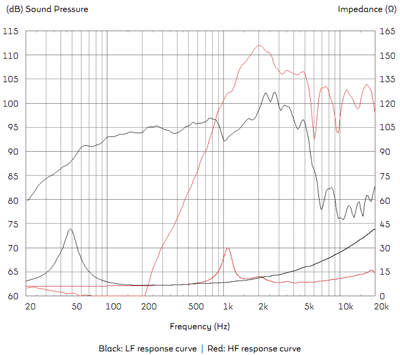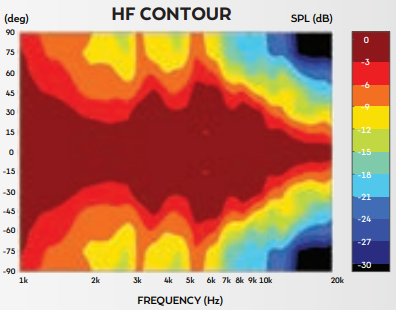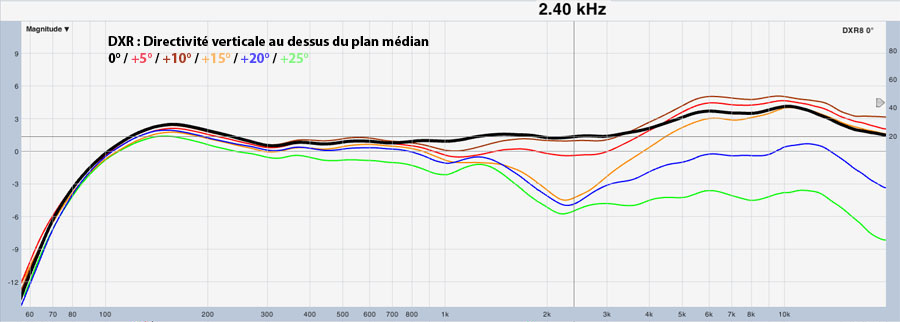I see your point, but I don't think you're looking at the whole picture. Yes, "good off-axis response" means keeping things as flat as possible when you're off axis. But that's only part of it. It also means keeping the signal level up when you're off-axis.
It only means "keeping the signal level up when you're off-axis" if that is what you desire. A "good off-axis response" does not equal a "wide off-axis response." In fact, a "narrow off-axis response" might be what one desires, and that would be "good." Depends on the application. So to characterize "wide" as "good" seems the wrong criteria to me.
Further, you can have wide off-axis response without resorting to HF-through-woofer speaker and its jagged response, so even if I were to accept "wide" as "good," I find the point moot.
Additionally, you have not commented so far on the jagged on-axis response of a HF-through-woofer design. It's arguable that this is not a worthwhile trade-off to begin with, so perhaps you could address it.
Let's look at the 45° point, which is about the best spread that you can get with current designs. The coaxial graph you published shows the response to be 3 dB down over half of the spectrum (and rarely more than 6 dB down until you approach the last octave). At the same 45° listening angle, the compression driver is so severely attenuated that other sources of sound (reflections, other speakers, etc.) start to dominate, and the frequency response of the driver becomes irrelevant. That's why I say the first driver has better off-axis response: it puts out a usable signal farther off axis.
The examples I provided were chosen to display the typical off-axis response behavior (jagged or smooth) of different designs. They do not display the comparative max-SPL capability of each, nor the resulting max-off-axis-SPL capability of each. (The "3 dB down" of the coaxial might be quieter than the "-6~-9 dB down" of the non-coaxial, the dB doesn't carry over graphs.) That is an unknown. And it should really be considered on a "product-by-product" basis, not "design type-by-design type" basis, there's many other factors on what makes for a louder 45 degree off-axis product to say otherwise.
If you have data that the HF-through-woofer design type generally has a higher 45 degree off-axis SPL than a non-coaxial design type, I'd be interested to see it. But the examples I've provided do not provide a basis for that discussion.
(BTW, HF-through-woofer type
I've seen have less output capability in general than separate high output driver elements.)
Yes and no. In the critical midrange, the drivers will interfere with each other, no matter how good the crossover is. You can't say "this apple will be similar to this orange" without doing the same measurements on equivalent configurations. That's like evaluating one ingredient against an entire soup.
This is true with the coaxial as well, yet you haven't asked for its combined response, and I have not provided one.
You're comparing apples-to-apples with the examples I've provided.
And again, I've already remarked how the non-coaxial drivers will interfere with each other in regards to vertical off-axis response. I've mentioned it several times, but perhaps it's gone unacknowledged because you aren't aware? Lobing? The effect of lobing is very predictable, if one knows what it is, one should easily be able to imagine its effect even with just the graphs I've provided.
This is fun! Despite disagreeing strongly with me, you've kept your comments respectful and factual. I can deal with dissent like that all day.

I try to be respectful to everyone on the forum! Especially you, since there's a lot of great insight from you on this forum, I'm a fan

Thanks for taking it for what it is, and not reading any offense or whatnot into it as I dissent








